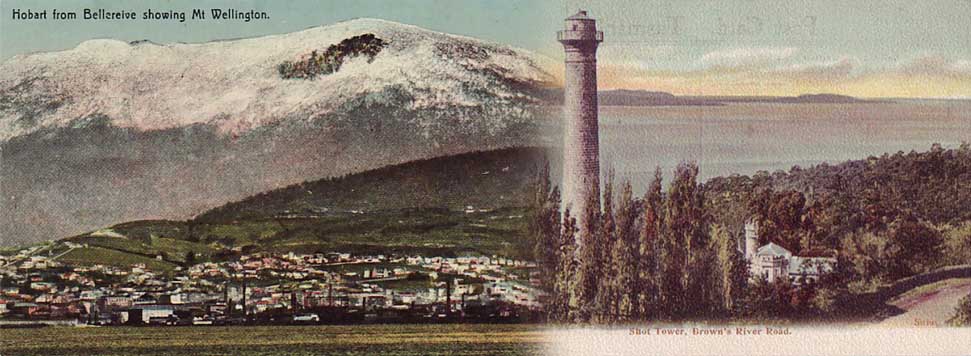The Rose Stereograph Company was established by George Rose in the late 1800s. At first he produced stereographic photographs, that consisted of two slightly displaced images of the same scene which were viewed through a stereoscopic viewer. Such stereographs were popular in the late 19th century but waned in popularity and were replaced in popular appeal by postcards from about 1900. The Rose Stereograph Company entered the postcard business fairly late, in 1912, producing photographic print postcards which continued up to 1967. In 1967 they changed to publishing color postcards that were printed by offset by commercial printers; these are not covered here.
Rose postcards are real photographic prints. They were produced from photographs on glass plate negatives and printed on photographic paper by the standard wet photographic process. In a light-tight workroom at the Armadale premised there were two rows of six printing machines which could expose 40 photographic postcards per minute, or 4,000 prints per day (Blum, 2011).
Rose stereographs and postcards covered subjects Australia-wide, with those from Victoria subjects predominating. George Rose had travelled in Australia, Europe and Asia photographing stereoscopic views and he continued travelled extensively in Australia for postcard photography, and made excursions into the Pacific Islands as well. His output of Australian postcards exceeded 20,000 cards. The coverage of Tasmania was fairly small at 416 cards, numbered P.12300 – P.12716. In addition to Rose’s own photographs, in 1941 the company purchased a group of views from Stephen Spurling, a Launceston photographer, which appear on Rose cards with 6 digit numbers P.123100 – P.123178.
George Rose retired in 1930. In 1931, he sold the Rose Stereograph Company to two of his employees, Edward Gilbert and Herbert Cutts. Edward Gilbert sold his share to Herbert Cutts in about 1940 and then Cutts owned and managed the company until his death in 1962. His son Neil succeeded his father in operating the company.
Rose’s main series of cards was the P Series, produced from 1913 to 1967, and covering numbers P.1 up to P.14970 plus a small group P.123100 – P.123178. Within this series, numbers are grouped by state, with Tasmanian cards being P.12300 - P.12716 plus that small group of cards P.123100 – P.123178 which were purchased from Spurling & Son. Rose produced other short series of cards; Southern Cross Series (from 1929), a Footprint of Memory, Royal Family, Caufield Military Hospital, Australian War Memorial, Defence Series, Tran-Australian Railway, but none of these contain Tasmanian views.
Deciding who was the photographer of a Rose postcard image is difficult. George Rose commenced publishing postcards with a large library of stereoscopic views at hand, one half of which could be used as a postcard. and he continued photographing until he retired in 1930. Even then he came out of retirement for a few years prior to his death in 1942. The Cutts family, Herbert and Neil, continued taking b&w images after 1931. The cards do not show the name of the photographer.
It is also difficult to determine when a postcard was printed. A particular image may be reused on reprints of cards, with no indication of when the card was reprinted. The back layout of the card is of some assistance for Victorian cards, as the rose symbol on the back was progressively reduced in size. All Tasmanian cards I have seen, all of which were produced after about 1946, have the small version of the rose.
There are two books about George Rose:
Blum, Ron. 2008. George Rose Australia’s Master Stereographer. Published by the author. 2 Hussey Ave, Oakland Park, SA 5046. ISBN 978-0-9589572-3-6
Blum, Ron. 2011. George Rose The Postcard Era Published by the author. 2 Hussey Ave, Oakland Park, SA 5046. ISBN 978-0-9589572-4-3
